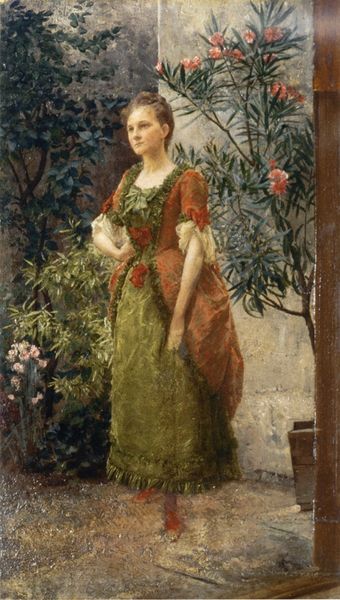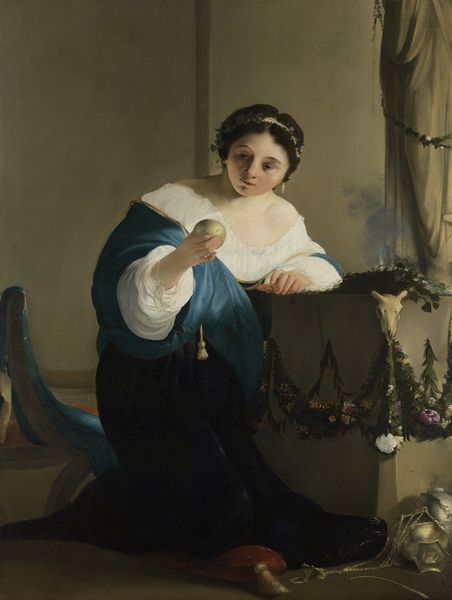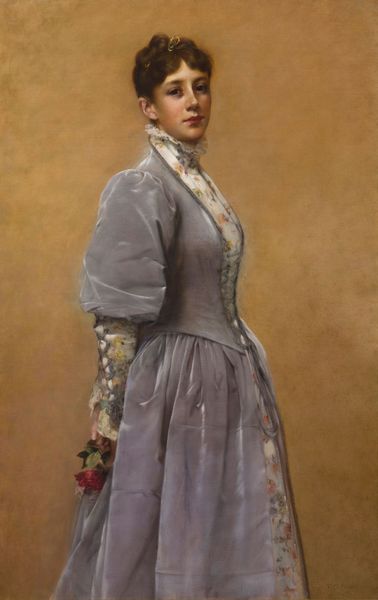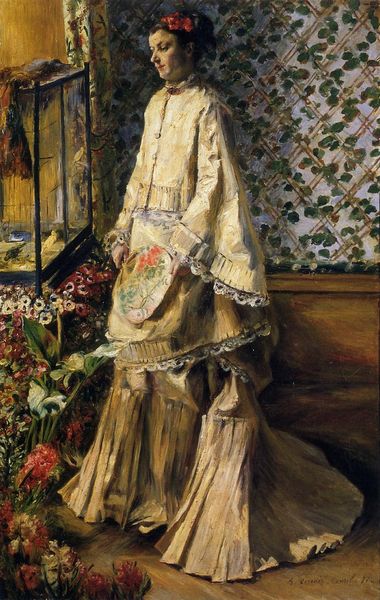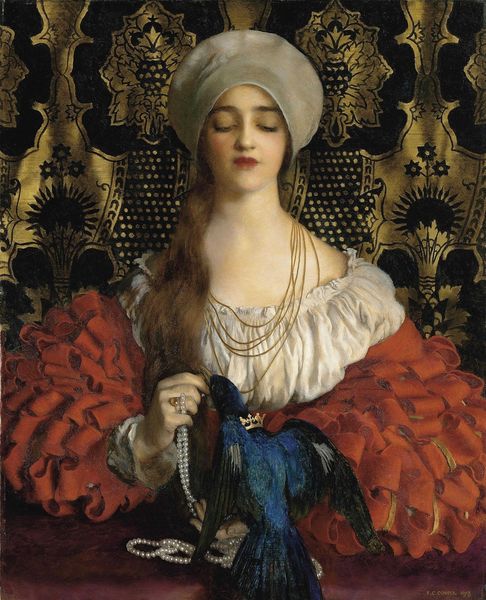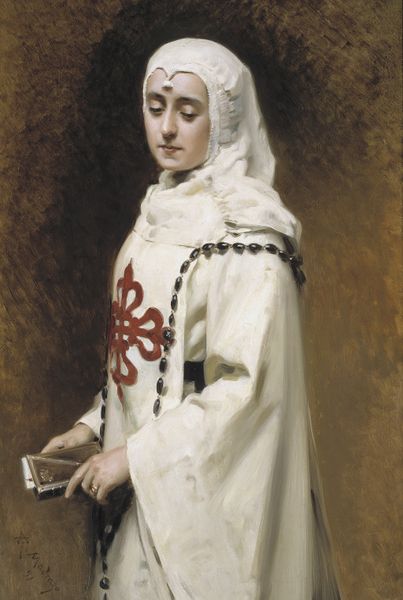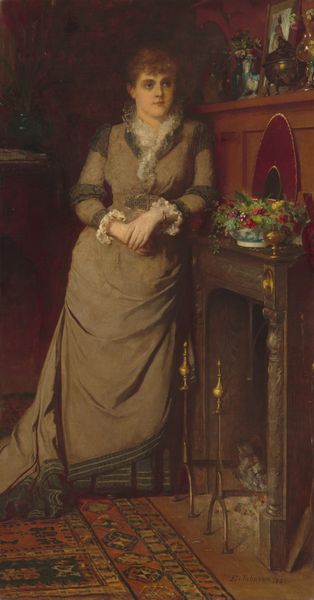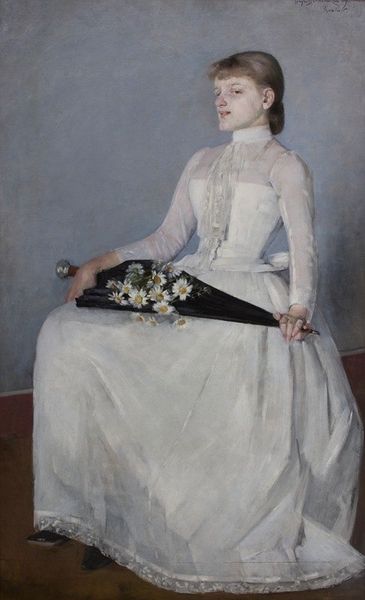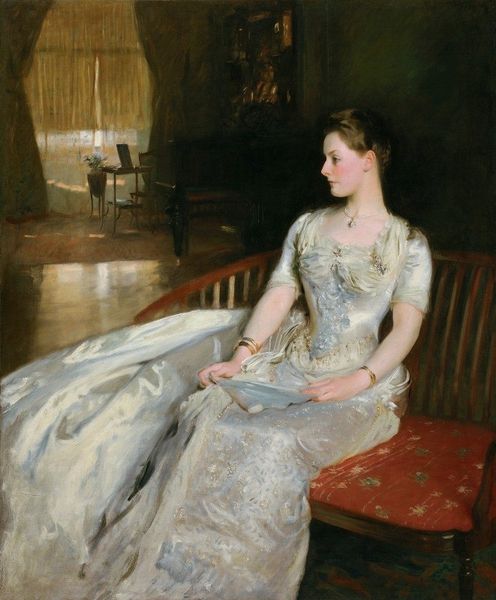
Dimensions: 104.4 x 82.4 cm
Copyright: Public domain
Curator: My first thought is that she seems incredibly apprehensive. What do you see when you first look at her? Editor: An echo of bygone eras caught in this bridal portrait, oil on canvas. Painted in 1861 by Jean-François Portaels, entitled "A Sicilian Bride". The image strikes me with its exquisite melancholy. It's all there in her downwards gaze. She almost floats—or rather she is pinned—by the weight of tradition. Curator: Yes, that downcast gaze is key. Consider how marriage functioned then – less about individual desires and more about familial alliances. The religious imagery in the background, the Madonna and Child, underscores her expected role: bearing children, continuing the family line. Her finery reads to me as symbolic markers, speaking to a societal expectation more than individual joy. Editor: True. Her costume isn't just adornment, but a dense language of status and expectation. Though note how subtly defiant the details become. She’s beautiful. This beautiful Sicilian bride feels claustrophobic and restless. It makes you wonder about the life ahead of her. I would not say that this belongs strictly to “history-painting”; this feels incredibly intimate, almost stolen. Curator: You pinpoint the interesting tension within the artwork itself—the blend of social record and captured feeling. I think it is exactly here where the painting really resonates. The artist caught more than just a likeness; he seems to have seized an ambivalence deeply embedded in her circumstances. See the carefully positioned rosary and wedding bouquet; they suggest devotion but offer no consolation in their tangible reality. Editor: And how much do you want to bet that it's heavier than it looks! The artist is not just showing her—but really letting us ponder the social weight placed upon women in that era. Even that severe belt and adornment, while exquisite, looks as if it holds her in. A poignant reflection from 1861 that feels perpetually current, still. What else is there to add to the symbolism? Curator: Look around! The materials, the colors of her attire—speak volumes of a bygone age. They're not merely aesthetic choices but emblems of family status and local heritage, reflecting what's being carried from generation to generation through this union. Perhaps they highlight what is also expected to be retained and carried on into the future? It is as much about her past as it is about her future! Editor: Fascinating thoughts! I suppose this is why art has the capacity to haunt us. Thank you for shedding more light onto her story, the “Sicilian Bride”.
Comments
No comments
Be the first to comment and join the conversation on the ultimate creative platform.
